Analog signals, RGB and Recalbox
Wed Jan 04 2023
Analog signals, RGB and Recalbox
As many of you know, the Recalbox team has developed a module (also called Hat) compatible with Raspberry pi3, pi4, pi400 and pi Zero 2W, the Recalbox RGB Dual.
Basically, on these boards, Recalbox can be connected to screens in different ways, digital via the HDMI port (micro-HDMI for pi4 and pi400, mini-HDMI for pi Zero 2W), or analog via the mini jack to RCA connector (pi3 and pi4 only).
Digital signals are natively supported by modern flat panels, however cathode ray tubes (or CRT), for which games up to the generation of 64/128-bit consoles were specifically developed, do not support this type of signal, and are only compatible with analog signals.
Recalbox RGB Dual allows you to bring to your Recalbox the possibility of being connected to two types of additional analog outputs, SCART (Euro-SCART) and VGA (D-SUB - DE-15) and, as its name suggests, the Recalbox RGB Dual allows you to transmit an RGB signal.
But what is this RGB signal and how is it different from other possibilities like the composite output present on all Raspberry pi with the jack output.
Different types of analog connectors
There are many types of analog connectors on the market. The list below summarizes the different connectors encountered in the general public (other types of specific connectors exist in the professional environment).
F Plug (Antenna connector)
A single coaxial cable with Type F connector. This type of connection was much more common in North America (USA, Canada). On a single cable, both audio and video signals pass, which strongly impacts the quality of the rendering, it is generally the one that gives the worst final rendering to the screen
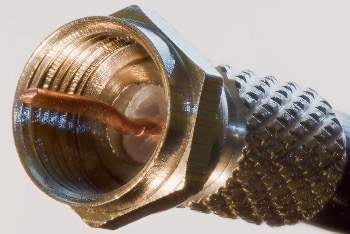
RCA Composite
Three RCA connectors Red, White (for stereo sound) and Yellow (for video signal). The video (and synchronization) signal being separated from the sound signals, the quality of the rendering is superior to a signal passing through an F plug
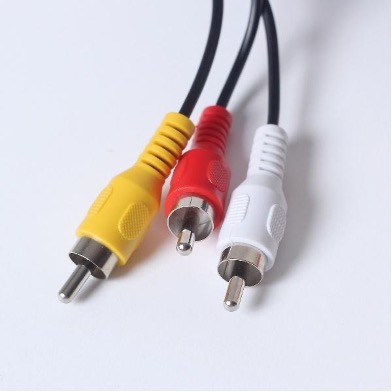
Quite widespread in Europe, arrived later in North America (arrived from the generation of 16Bits consoles).
S-Video
A 4-pin connector carrying only the video signal (the sound passing through a separate RCA connector)
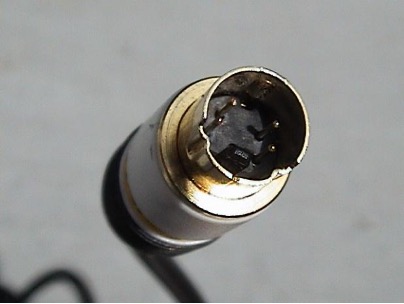
The video signal is separated into two lines, Intensity (or Luminance – coupled with synchronization) and Color (or Chrominance), which reduces the worries of degradation of the video signal compared to a composite signal.
Euro-SCART (Scart) and JP-21
These two connectors are identical but not compatible because the internal wiring is different. They consist of a 21-pin connector. The Euro-SCART connector corresponds to the format used in Europe and was mandatory on all TVs sold in France since 1980 (and until 2015), while the JP-21 connector is widespread in Japan and Korea.
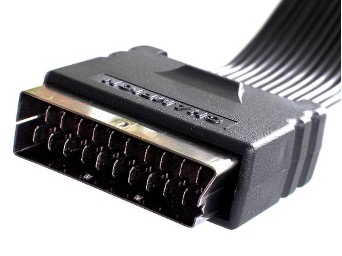
It is a connector that can pass several types of signals, there are also on the market composite adapters to SCART or S-Video to SCART, however these passive adapters do not improve the quality of the initial signal.
The audio signal passes in stereo on two dedicated pins.
On the other hand, thanks to the many pins present, it is possible to transmit more complex signals, such as an RGB signal.
The RGB signal passes through three different pins the different red, green and blue colors needed, as well as a synchronization signal (horizontal and vertical) of the image on a fourth pin.
This synchronization stream can come from different signals sometimes existing depending on the source: Composite video as sync: Retrieves the composite video stream directly to use only the synchronization information. The video stream, however, can interfere with the synchronization stream Sync on luma: retrieves the signal from the S-Video luminance stream Csync: contains only the synchronization signal and is therefore not subject to interference from another signal passing through the same pin, it is the one used by Recalbox RGB Dual
It is this connector coupled with an RGB signal, synchronized in Csync, which makes it possible to obtain the best rendering on a cathode ray TV.
DSUB - DE-15 (commonly known as VGA)
This 15-pin connector is prevalent especially on computer screens, and is generally absent from CRT televisions.
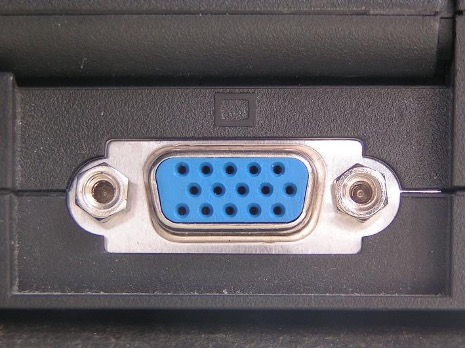
It transmits an RGB signal on three pins like the scart, as well as two separate synchronization signals (horizontal and vertical) on two other pins.
YPbPr (commonly known as Component or YUV)
Composed of three cables with RCA connectors for video streaming (sound passing through a separate RCA connector).
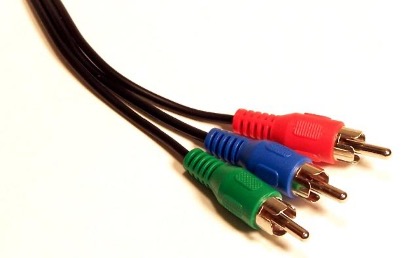
This format is more prevalent in North America and arrived on the generation of PS2/Gamecube consoles. It is a connector that has arrived on the end of life of CRT screens and is also present on flat screens. The video signal is separated into three distinct streams: Y: Luminance and synchronization Pb: Difference between blue and luminance Pr: Difference between red and luminance
The signal for the green color is generated by deduction with the other three data.
This signal separation improves video quality compared to the S-Video connector and allowed some TVs to display higher resolutions such as 480p.
Other info
The RCA Composite format is the most widespread in the world.
This is why nowadays PVM screens (CRT screens for professionals, mainly television control rooms and the medical community) supporting RGB are selling a fortune in this region, as in Europe, and that "RGB Mods" for televisions are numerous.
Europe and Japan were very lucky to have the best in connectivity (peritel) and signal (rgb) for televisions.
Recalbox RGB Dual
The Recalbox team always seeks to allow you to play in the best conditions, the only connectors retained by the team correspond to the only ones allowing to pass the RGB streams, with the best possible quality, in analog, to CRT screens, and easily available to the general public: the SCART and VGA connectors.
Regarding the synchronization on the SCART connector, it is done via a Csync signal, coupled with an RGB signal to have the best possible video stream via this connector. The CSync signal is created very precisely by combining the two synchronization signals in the Pixel Factory of the Recalbox RGB Dual.
It should be noted, however, that analog signals are much more sensitive than digital signals to external interference. It is therefore advisable to use good quality cables (VGA or SCART), ideally with shielding on each wire inside the cable, to reduce the risk of disturbance.
If you were hesitant to take a Recalbox RGB Dual and this article convinced you, you will find more information and the possibility to order one on this page.
Attention : As indicated in the list above, the cabling of the JP-21 format is different from the Euro-SCART format, so it is necessary to use a SCART to JP-21 adapter to be able to connect Recalbox RGB Dual to Japanese or Korean hardware.
PS : On modern displays (flat panels) you may have VGA or SCART connectors. It is recommended on these screens to stay on an HDMI digital connection. The signals passing through the analog connectors of modern screens are transformed into digital by the screens in order to adapt it, which induces a loss of image quality, in addition to adding input lag when you play.